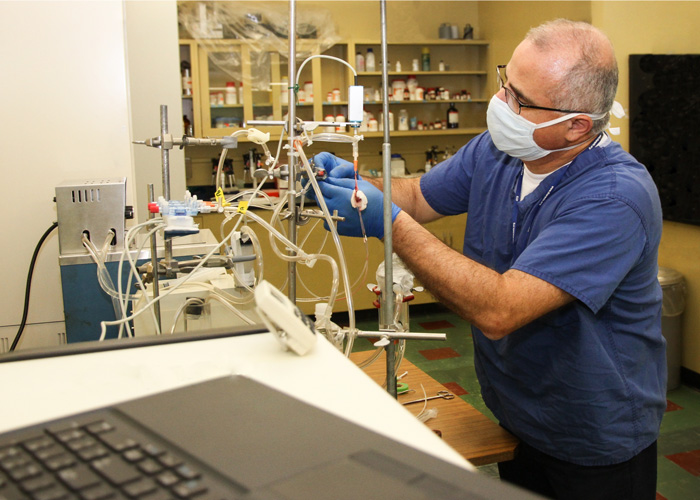Sadri Dissertation Abstract
Characterizing Substrate-Dependent Cardiac and Renal Mitochondrial Respiration and Bioenergetics and Mitochondrial and NADPH Oxidase 2 Medicated ROS Production
Dissertation Date: July 21, 2023
Oxidative stress has been associated with the pathogenesis and progression of a diverse range of human diseases, such as neurodegenerative, cardiovascular, and renal diseases, cancer, aging, and hypertension. It is well-established that an imbalance between the production and degradation of reactive oxygen species (ROS: e.g., 2O•−, H2O2) can lead to ROS accumulation and cause oxidative damage to biomolecules such as proteins, lipids, and DNA in various human diseases. The major sources of intracellular ROS in various organs are mitochondria and NADPH oxidases (NOXs: e.g., NOX2, NOX4). Also, heart and kidney are the two most metabolically active organs in humans and rodents with high mitochondrial contents, basal metabolic rates, and energy requirements. In addition, NOX2 and NOX4 isoforms are reported as the most abundant isoforms among NOX family in the heart and kidney. Comprehending the role of oxidative stress and metabolic dysfunction in the pathogenesis and progression of cardiovascular and renal diseases requires a grasp of tissue-specific and substrate-dependent understanding of mitochondrial respiratory and bioenergetic functions, contribution of mitochondrial ROS (mtROS) producing and scavenging components, NOX-mediated ROS production, and NOX-mitochondria ROS-ROS crosstalk towards overall mtROS emission (production – scavenging). There is a lack of a tissue-specific and substrate-dependent mechanistic and quantitative understanding of network of transporters and enzymes responsible for altered mitochondrial respiration and bioenergetics leading to metabolic dysfunctions. Also, the contribution of NOXs towards overall ROS production, and the regulatory roles of NOXs and mitochondria on mtROS emission remain largely unknown. Furthermore, most studies related to mitochondrial respiration, bioenergetics, and ROS emission have focused on the heart and skeletal muscle mitochondria, with very limited data and mathematical model available for the kidney mitochondria.
The primary goal of this dissertation work was to use a hybrid experimental and computational approach to quantify metabolic substrate-dependent mitochondrial respiration, bioenergetics, and the contribution of different components in the ROS regulation pathway, which would enable in the long-run to understand NOX-mitochondria ROS-ROS crosstalk towards overall ROS generation, development of oxidative stress, metabolic dysfunctions, and pathogenesis of diseases in the heart and kidney cortex and outer medulla (OM), the major energy consuming tissues in our body.
In this work, three integrated computational models of metabolic substrate-dependent mitochondrial respiration and bioenergetics in the heart and kidney cortex and OM were developed as well as NOX2 complex-mediated ROS generation on the cell membrane. Also, a comprehensive set of experimental data were collected to measure substrate-dependent mtROS emission and quantify the contributions of different mtROS producing and scavenging components towards overall mtROS generation in the heart and kidney cortex and OM. The proposed computational models and experimental data will further our understanding of the molecular and cellular mechanisms behind mitochondrial respiration and bioenergetics and overall ROS production in the heart and kidney cortex and OM and provide a quantitative basis for identifying potential targets in the mitochondrial metabolic pathways and mitochondrial and cellular ROS handling pathways for therapeutic purposes for different cardiovascular and renal diseases, including salt-sensitive hypertension.
Return to Dissertation Schedule


